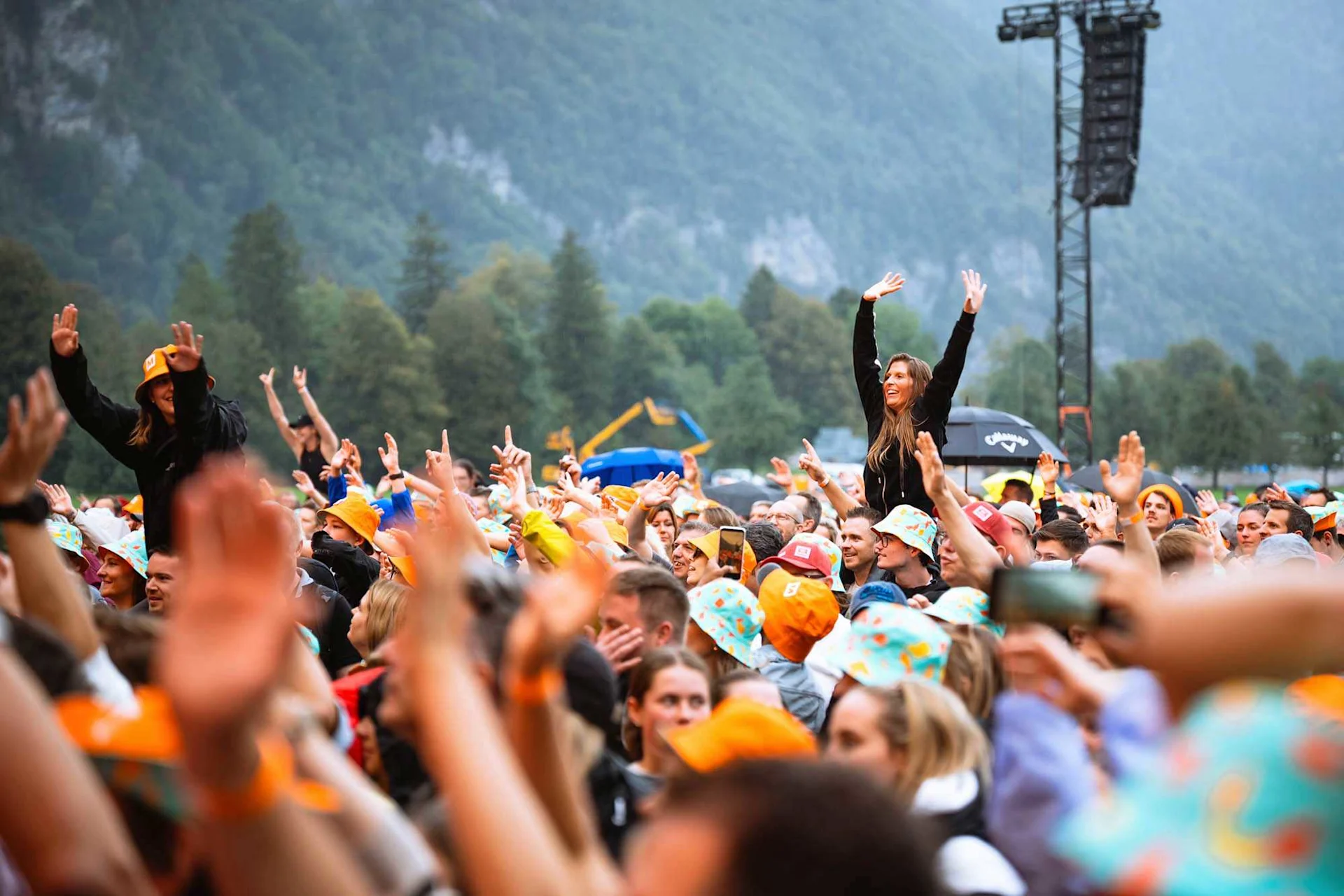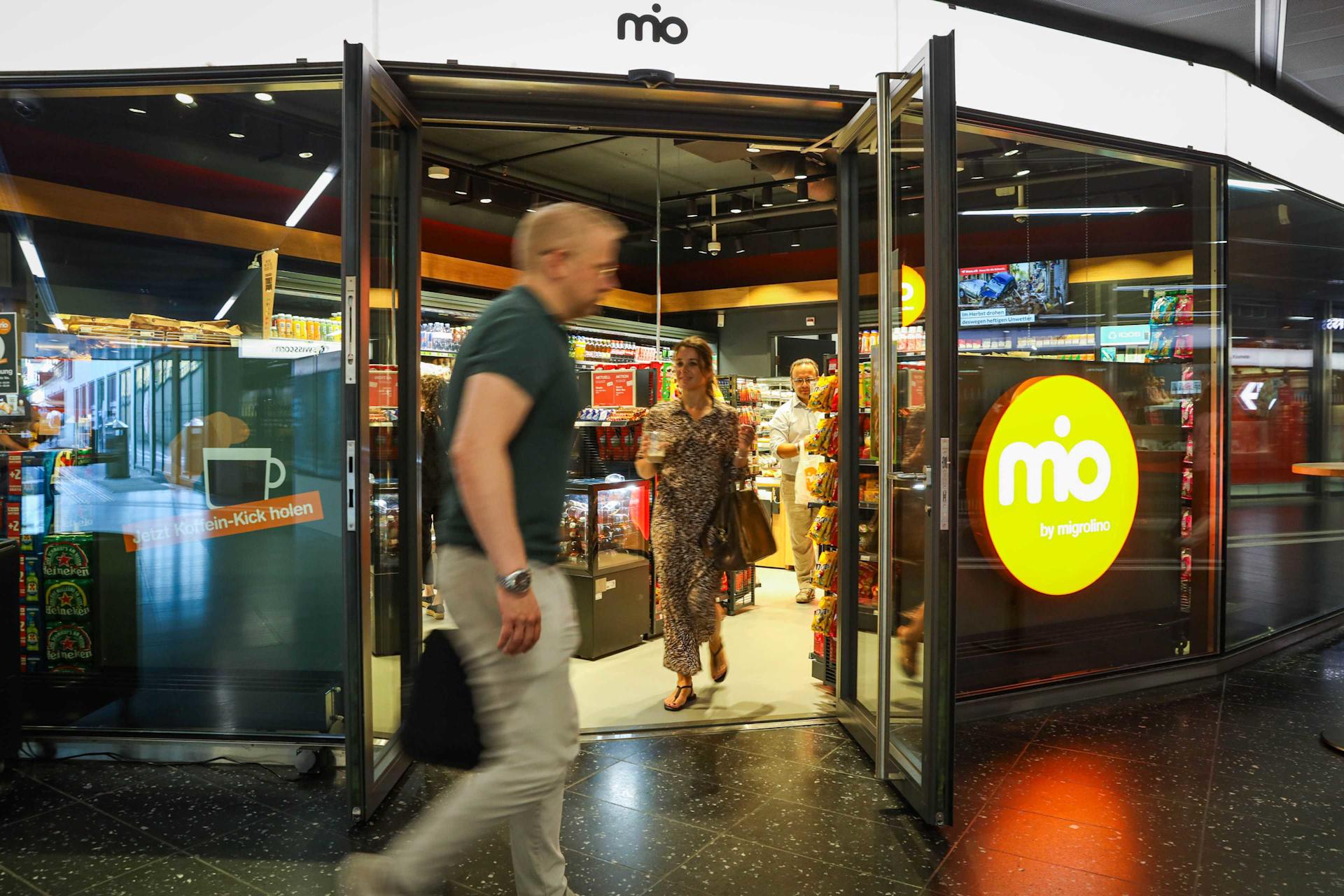
Migros anniversary
The year of celebration in orange
The many ways Migros celebrated its 100th birthday. A look back at Migros’ centenary.
navigation

mio by migrolino
The small mio shops are popular with motorists. Migros now also wants to use them to sell their goods to train passengers. This fits in with the rapid development of train stations.
At first glance, the yellow building looks as if it is from another time: it has green shutters and a turret with a clock and weather vane stands on four thin pillars on the roof. The station building at Baden still looks the same as it did when it was opened back in 1847. It is the oldest railway station in Switzerland and is where Switzerland's proud railway history began.
Nevertheless, this stop is not a museum exhibition, quite the opposite: it is a lively hub where 33,000 people hop on and off trains every day. Like a magnet, the SBB station has attracted an ever-increasing number of shops and other businesses. You can do your shopping here and there are numerous places to grab a quick bite to eat, from a pretzel to a burrito. At the beginning of July, Migros opened the first mio shop at a train station right here. This shop is tailored to the needs of travellers and commuters.
mio is a small version of migrolino and an ideal addition to our portfolio.
Train stations and other transport hubs enjoy very high footfall. However, people only spend a short space of time in them. "mio by migrolino" provides fast, convenient shopping solutions in response to the mobile population's changing needs. Commuters and travellers can do their shopping in less than a minute. "The mio concept has successfully established itself at petrol stations over the past five years, which is why we will be rolling it out at train stations throughout Switzerland over the next few years," says Lorence Weiss, CEO of migrolino. "mio is a small version of migrolino and an ideal addition to our portfolio. Both store formats meet the different needs of our customers," explains Lorence Weiss.
This all fits in very well with the development of the SBB stations – from once barren ticket counters with musty waiting rooms to popular meeting places with a wide range of shops. "Nowadays, train stations also attract people who don't even need to get on a train," says Michael Bützer from the Swiss Public Transport Information Service. "That wasn't always the case: in past decades, they tended to be service wastelands that were devoid of people in the early evening."
Nowadays, train stations also attract people who don't even need to get on a train.
From 1852 onwards, many railway lines were built in Switzerland. Although restaurants were built at the stops – such as the legendary Bahnhofbuffet Olten – there were no shopping facilities there. "Shops were not even envisaged in the station floor plans," explains Laura Kaiser, archivist at the SBB Historic Foundation. "It was only with time that mobile kiosks appeared – small trolleys that were pushed from platform to platform by vendors."
The trains were strictly divided into three classes, which was also evident at the stations. Although all passengers could drop off their luggage at baggage check-in, travellers with the more expensive tickets were served first. It was not until 1957 that the SBB abolished the three-class system: third class became second class and second class became first class. The luxurious top class with its lavishly upholstered armchairs disappeared. The railway had long since become part of everyday life, with many people already commuting to work by train.
However, there was now a new vehicle on the scene – the car, which was increasingly competing with the SBB. This became a problem in the 1960s at the latest – everyone wanted their own car and the railway lost its appeal. The SBB desperately fought to attract passengers with loud posters and discount campaigns. The railway stations turned into wastelands. All you could do her was get on and off trains or simply stand there waiting. Sometimes, nothing happened at all, as in Mani Matter's "Lied vo de Bahnhöf wo dr Zug geng scho abgefahren isch oder nid isch cho" ("Song of the train station where the train has already left or isn't going to come at all").
The decline was only halted by a major innovation that continues to have an impact today – the synchronised timetable introduced by the SBB in 1982. It has resulted in many more connections, regular departures, better connections and shorter waiting times at the stations. This way in which our public transport systems is as accurate as a Swiss clock is still the envy of our neighbouring countries today. It enabled the railway renaissance that can be experienced so beautifully in Baden: the crowded platforms, the numerous shops and food outlets – all of this shows that the station is alive and kicking.
Discover exciting stories about all aspects of Migros, our commitment and the people behind it. We also provide practical advice for everyday life.